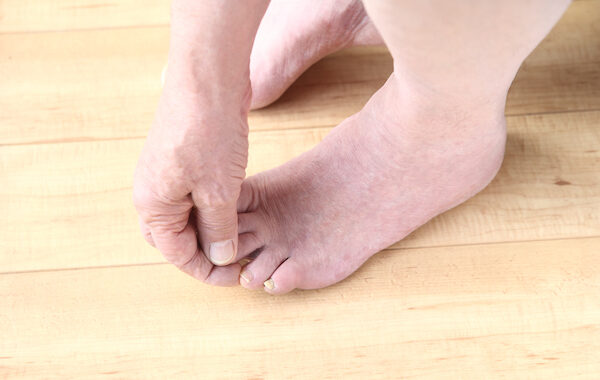Did you know that falls are the leading cause of injury and mortality in the elderly population, according to the Centers for Disease Control and Prevention (CDC)? In fact, 36 million older Americans, those aged 65 and older, suffer fall injuries every year, with 3 million treated in emergency departments (ED), 300,000 hospitalized for hip fractures, and 32,000 succumbing to their injuries.
Not only are older folks more likely to fall, but they are also more likely to suffer serious injuries, such as a bone fracture or traumatic brain injury, or TBI (also known as “craniocerebral trauma”). These injuries can make it difficult for them to move around, carry out even the most basic tasks, or live alone.
Falling can be a terrifying and humiliating experience for the elderly. Many older people who fall, even if they are not injured, develop a phobia of falling. This fear can make them unwilling to leave their home and limit their everyday activities. When older adults are less active, their muscles weaken, increasing the risks of yet another fall.
So, what can you do to prevent these slips and falls? Monitoring the health of your own feet is a great starting point. Let’s find out how.
What Factors Contribute to Falls?
Painful foot disorders such as osteoarthritis (or “degenerative joint disease”), corns, bunions (or “hallux valgus”), hammertoe (or “rotated toe”), and diabetes complications can make walking and standing extremely difficult for older people as they are not able to maintain their balance and coordination.
The problem is made worse by the fact that exercises designed to correct risk factors for falls, such as leg weakness and gait, balance, and coordination problems are more difficult to perform when one has painful and debilitating foot and ankle disorders.
While numerous factors contribute to falls, seniors, and everyone else for that matter, can take steps to lower their risk by limiting or even eliminating foot pain. Foot and ankle orthopedic surgeons recommend the following ways to maintain healthy feet and ankles and avoid falls:
Do Not Ignore Your Foot Pain
To begin with, just because they are common does not mean that you should ignore your foot pain. Foot pain is not a part of the aging process, so do not dismiss it. If you find it difficult to stand or walk, you are more likely to stop being physically active and that can lead to a host of other health complications in the future.
While some aches and pains might not necessitate a trip to the doctor’s office, it is always better to be safe than sorry. If you have severe foot or ankle pain or discomfort that lasts more than a week, you may have a treatable health condition. Pay close attention to your feet and, if you experience pain and discomfort, consult a foot and ankle orthopedic surgeon for an accurate diagnosis and treatment.
Examine Your Feet
It is crucial to examine your foot health regularly to detect problems early on. Look for swelling, darkening of the skin or nails, blisters, and excessive corns and calluses while sitting.
Do not forget to look at the soles of your feet as well as the space between your toes. Pay close attention to the changes in the shape of your foot and ankle while standing. If something has changed or looks suspicious, you should consult with your foot and ankle orthopedic surgeon right away.
Regular Exercise
Exercising and stretching your feet and ankles every day can help ensure that the muscles provide the best support possible. These simple exercises can also improve the range of motion in your feet, allowing them to stay fit and active for as long as possible.
Most of these foot exercises are simple to perform and do not demand any complicated or expensive equipment. You can do them at home or in the fitness center as part of a regular workout regimen.
Protect Your Feet
You can effectively relieve foot pain and soreness with padding and insoles that are both discrete and affordable.
Wearing a pair of slim insoles made of gel or foam that softly absorbs ball of foot pressure (or “metatarsalgia”) and shock while standing is a smart option. Because they are barely noticeable, you can even wear them in your everyday shoes. Simple padding placed in the front of the shoe for shock absorption can also provide pain relief.
Consider Surgery
Foot and ankle surgery can help if less invasive, conservative treatment options have failed to alleviate your foot problem. Removing foot deformities such as bunions and bone spurs, severe arthritis that has caused bone issues, and cosmetic reconstruction are some instances in which surgical intervention may be necessary.
Though surgery is typically seen as a last resort, it offers several advantages, including:
- Improved range of motion
- Ease of performing everyday activities like buying groceries and walking up a flight of stairs
- Reduced pain, swelling (or “edema”), and discomfort
- Increased joint mobility and deformity prevention
Surgical procedures have become more technologically sophisticated as well. Endoscopic surgery, for example, allows smaller incisions and faster recovery. If you are considering surgery, you should consult with a foot and ankle orthopedic surgeon near you.
Conclusion
Remember that a single fall can rob older people of their freedom and significantly decrease their quality of life. Taking good care of your feet and ankles, on the other hand, may save you from an easily avoidable and potentially fatal fall injury. Visit the FootDocStore.com blog for more information on how to keep your feet and ankles healthy.

